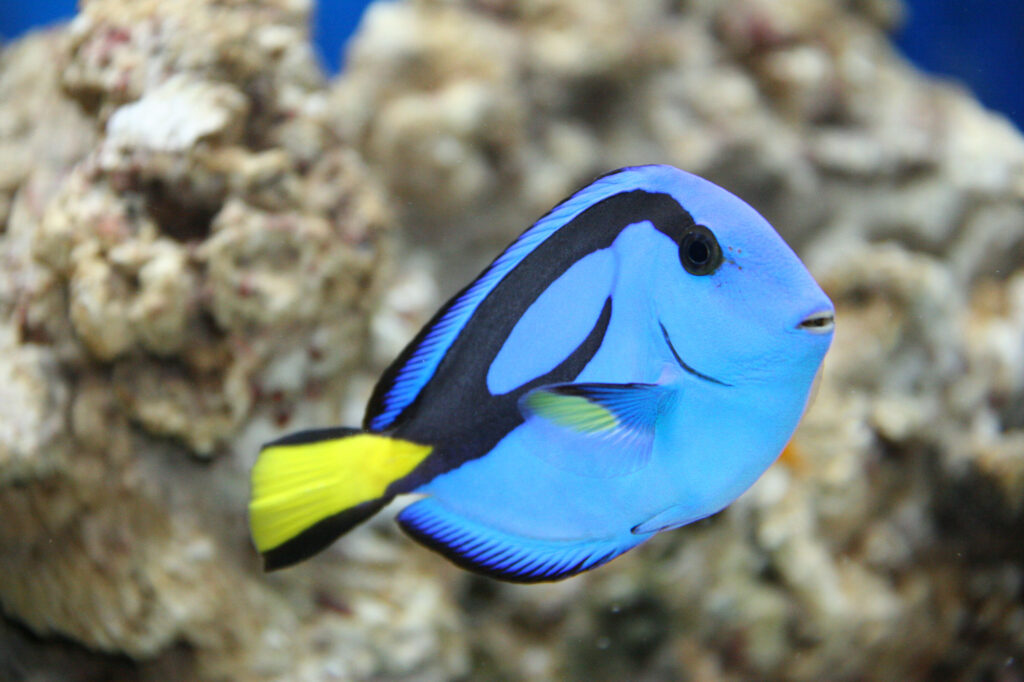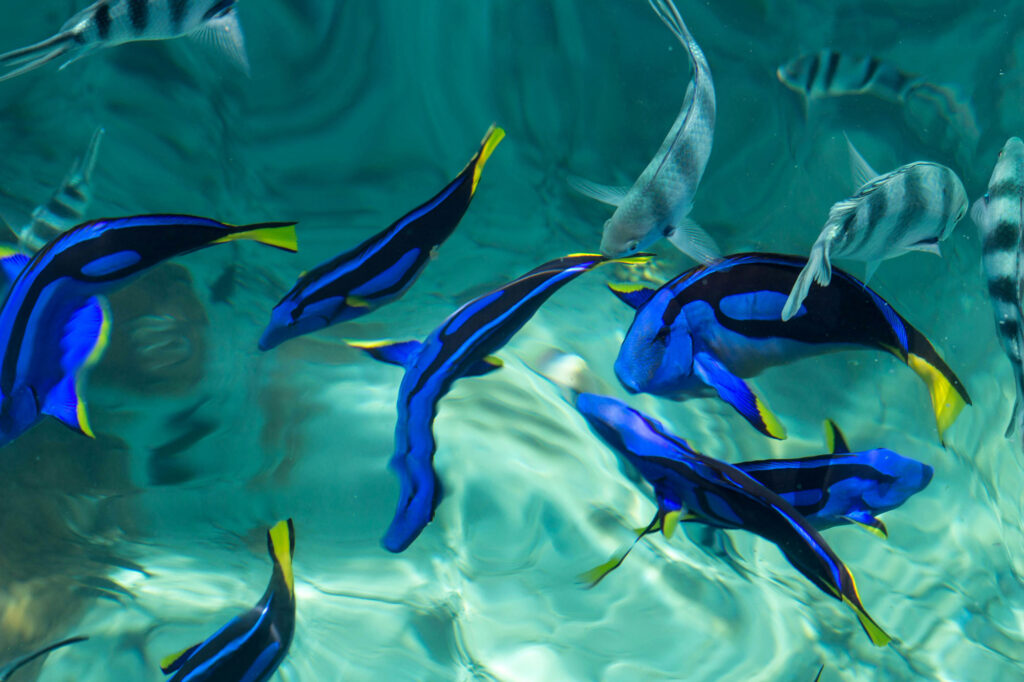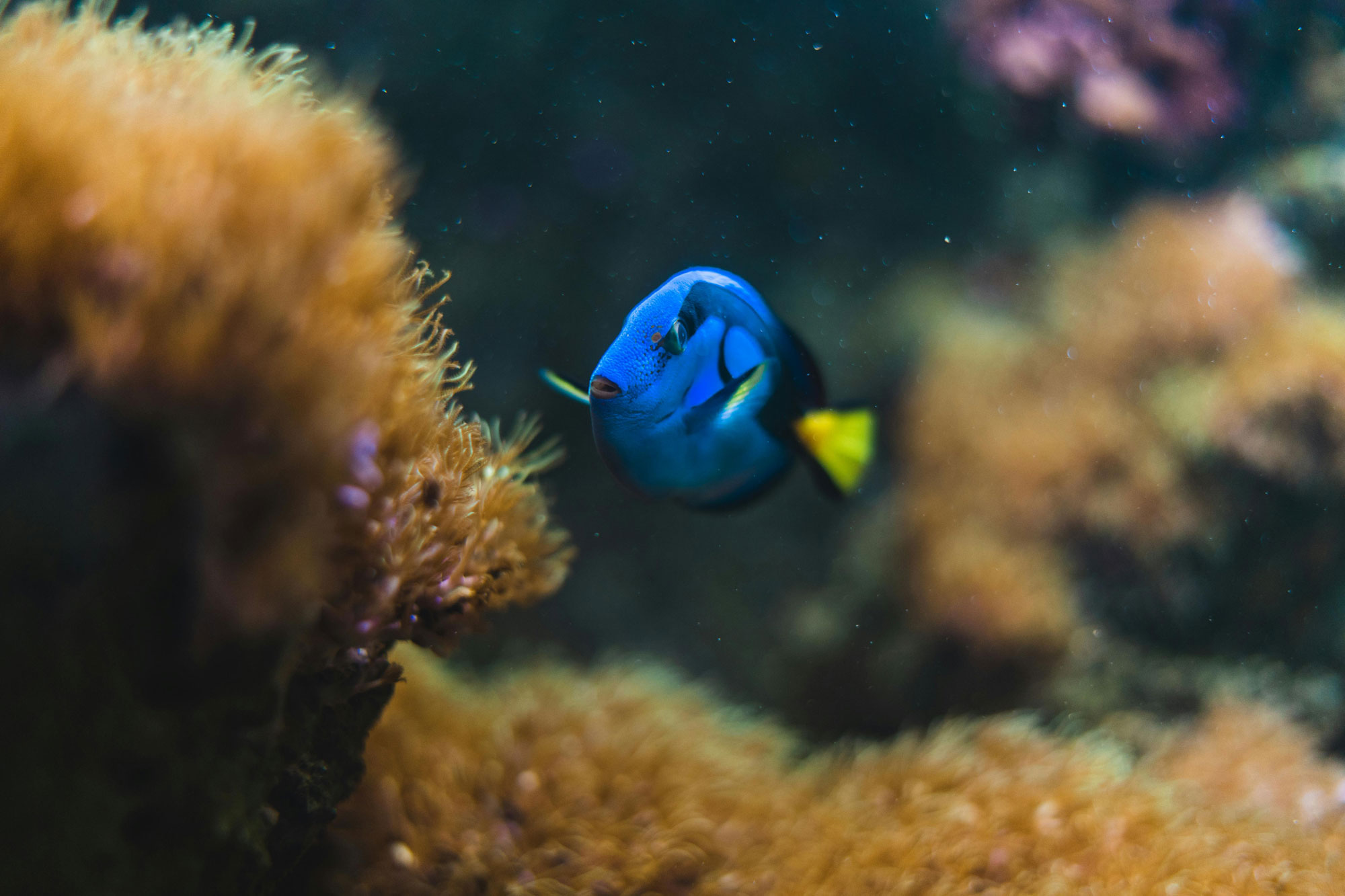Meet the Real Fish Behind the Beloved Ocean Icon
If you’ve ever watched Finding Nemo or Finding Dory, you already know Dory: the bright blue, big-hearted fish with a short memory and an even bigger personality. But the real Dory exists far beyond the screen, and she’s even more fascinating in the wild.
The character of Dory was inspired by a real fish that lives on coral reefs in the wild. And while the animated version makes us laugh, the real-life fish behind Dory plays a serious role in keeping coral reef ecosystems healthy.
So who is the real Dory, and what can her real story tell us about the state of our oceans today?
What Kind of Fish Is Dory?
Dory is a blue tang (Paracanthurus hepatus), also known as a regal tang, palette surgeonfish, or hippo tang. These fish are a reef-dwelling fish found throughout the tropical Indo-Pacific. They’re instantly recognizable thanks to their vivid blue bodies, bold black markings, and bright yellow tails.
Blue tangs live primarily on coral reefs, where they spend their days swimming among coral structures and grazing on algae. They can grow up to 12 inches long and often live in small groups, especially as juveniles.

Despite their friendly on-screen portrayal, blue tangs are surprisingly tough. Like other surgeonfish, they have sharp, spine-like scales near their tails—used for defense when threatened.
Fun Facts About Blue Tangs
Blue tangs may be animated icons, but their real-life traits are just as interesting:
- They change color at night. When blue tangs sleep, their bright blue coloring fades to a paler shade, helping them blend in and avoid predators.
- They’re reef cleaners. Blue tangs eat algae that grows on coral reefs, helping prevent algae from overwhelming corals.
- They start life transparent. Juvenile blue tangs are tiny and nearly see-through before developing their signature blue color.
- They’re fast swimmers. Their flattened bodies are built for quick bursts of speed through complex reef environments!
- They rely on coral for protection. Young blue tangs often hide among coral branches to stay safe from predators.

Why Coral Reefs Matter to Blue Tangs
Coral reefs aren’t just a backdrop for blue tangs—they’re essential to their survival.
Reefs provide:
- Food, including algae and microscopic organisms
- Shelter from predators, especially for juveniles
- Breeding and nursery habitat
- Complex structures that support healthy fish populations
When coral reefs are damaged by warming oceans, pollution, or overfishing, blue tangs lose the habitat they depend on. Fewer healthy reefs mean fewer places to feed, hide, and reproduce, putting species like the blue tang at risk.
In other words, protecting coral reefs helps protect Dory and thousands of other reef-dependent species.
Supporting Dory Means Supporting Coral Reefs
Loving Dory doesn’t have to stop at the movies. Supporting the real Dory means supporting the coral reefs that make her life possible.
Organizations like the Coral Reef Alliance (CORAL) work with communities, scientists, and local partners to reduce threats to reefs—by creating protected areas for critical fish species, improving water quality, and helping reefs adapt to a changing climate.
When coral reefs are healthy, blue tangs thrive. And when we protect reefs, we’re also protecting coastal communities, marine biodiversity, and the future of our oceans.
Because the real Dory isn’t animated and her story depends on what we do next.

